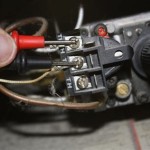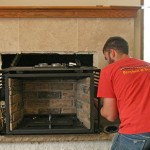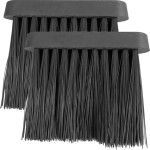```html
Prefab Gas Fireplace Inserts: A Comprehensive Guide
Prefabricated (prefab) gas fireplace inserts offer a convenient and efficient method for upgrading existing fireplaces or installing a supplemental heating source in a home. They represent a self-contained unit designed to fit within an existing fireplace opening, converting a traditional wood-burning fireplace into a modern gas-fueled appliance. These inserts provide a realistic flame appearance, controlled heat output, and simplified operation compared to their wood-burning counterparts. This article will explore the key features, benefits, selection criteria, and installation considerations associated with prefab gas fireplace inserts.
Understanding the Components and Functionality
A prefab gas fireplace insert comprises several essential components working in concert to deliver heat and simulate the aesthetics of a traditional fireplace. The firebox itself houses the burner, which is fueled by natural gas or propane. The burner is designed to create a visually appealing flame pattern, often enhanced by ceramic logs, decorative glass, or other media. A venting system is crucial for safely expelling combustion byproducts, such as carbon monoxide and water vapor, from the home. Most modern inserts utilize a direct vent system, which draws combustion air from outside and expels exhaust gases directly outside, minimizing the risk of indoor air pollution.
The insert is encased in a steel or cast iron shell, providing structural integrity and contributing to its overall thermal efficiency. A control panel, often including a thermostat and flame height adjustment, allows users to regulate the heat output and flame appearance. Some models offer remote control functionality for added convenience. A blower system, typically powered by electricity, circulates warm air into the room, enhancing the insert's heating capabilities. The front of the insert is typically finished with a decorative surround or trim that complements the fireplace opening and the room's décor.
Key Benefits of Prefab Gas Fireplace Inserts
Prefab gas fireplace inserts offer numerous advantages over traditional wood-burning fireplaces and other heating solutions. One of the primary benefits is convenience. Unlike wood-burning fireplaces, gas inserts eliminate the need for chopping, stacking, and hauling wood. They also eliminate the mess associated with ash removal and creosote buildup. Operation is simplified with the push of a button or the turn of a dial, offering instant heat and adjustable flame intensity.
Efficiency is another significant advantage. Gas inserts are significantly more efficient than traditional open-hearth fireplaces, which often lose a substantial amount of heat up the chimney. Modern gas inserts can achieve efficiency ratings of 70% or higher, meaning a greater percentage of the fuel's energy is converted into usable heat for the home. This translates to lower heating bills and reduced energy consumption. Many models also feature programmable thermostats, allowing users to schedule heating cycles and further optimize energy usage.
Safety is also enhanced with gas fireplace inserts. The sealed combustion chamber prevents the escape of sparks, embers, and smoke into the living space, reducing the risk of fire and smoke inhalation. Direct vent systems ensure that combustion byproducts are safely vented outside, minimizing the potential for carbon monoxide poisoning. Many inserts also include safety features such as automatic shut-off mechanisms in case of gas leaks or malfunctions.
Selecting the Right Gas Fireplace Insert
Choosing the appropriate gas fireplace insert requires careful consideration of several factors. The size of the fireplace opening is paramount. Accurate measurements must be taken to ensure the insert will fit properly and securely within the existing space. The heating capacity of the insert, measured in British thermal units (BTUs), should be appropriate for the size of the room or area to be heated. A larger room will require an insert with a higher BTU output. Consider the primary use of the fireplace. Is it intended as a supplemental heating source or primarily for ambiance? This will influence the desired heat output and features.
The type of gas supply available – natural gas or propane – is another crucial consideration. Inserts are typically designed to operate on one type of gas or the other, although some models can be converted from one to the other with a conversion kit. Factor in the venting requirements. Direct vent systems are generally preferred for their safety and efficiency, but they may require more complex installation. Consider the aesthetic appeal of the insert. Choose a model with a design and finish that complements the room's décor and personal preferences. Examine the features offered by different models, such as remote control, programmable thermostats, and variable flame height adjustment.
Finally, consider the reputation and warranty offered by the manufacturer. Choose a reputable brand with a proven track record of quality and reliability. A comprehensive warranty provides peace of mind and ensures that any potential issues will be addressed promptly and effectively. Consult with a qualified HVAC professional or fireplace specialist for expert advice and guidance on selecting the right gas fireplace insert for specific needs and circumstances.
Installation Considerations and Safety
Proper installation is critical for the safe and efficient operation of a gas fireplace insert. It is strongly recommended that installation be performed by a qualified and licensed HVAC technician or fireplace installer. Improper installation can lead to gas leaks, carbon monoxide poisoning, and other safety hazards. The installer will ensure that the gas line is properly connected, the venting system is correctly installed, and the insert is securely anchored within the fireplace opening.
Adherence to local building codes and regulations is essential. Permits may be required before installation can begin. The installer will also verify that the existing chimney is in good condition and suitable for venting combustion byproducts from the gas insert. Regular maintenance is also crucial for ensuring the continued safe and efficient operation of the insert. This includes annual inspections, cleaning of the burner and venting system, and replacement of worn or damaged parts. It is also essential to install and maintain carbon monoxide detectors in the home to provide early warning of any potential carbon monoxide leaks.
```
Prefab Linear Fireplaces Expert Fireplace Installation In Your Home

Zero Clearance Vs Prefabricated Fireplace Full Service Chimney

All About Prefabricated Fireplaces Chimney Savers

Prefab Linear Fireplaces Expert Fireplace Installation In Your Home

Fireplace Insert Basics Portland Or American Chimney

Pre Fabricated Fireplaces Canadian Home Inspection Services

Contemporary Gas Fireplace Inserts Provide Several Benefits Kozy Heat Fireplaces

Colorado Springs Co Prefabricated Gas Fireplace Fireplaces Install

New Wood Burning Prefab Fireplaces Complete Fireplace Installs

Prefab Chimneys Fireplaces F A Q Tullahoma Tn 1 Chimney
Related Posts








